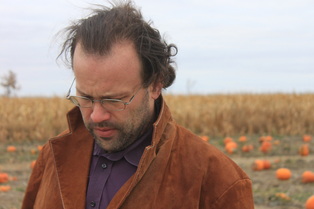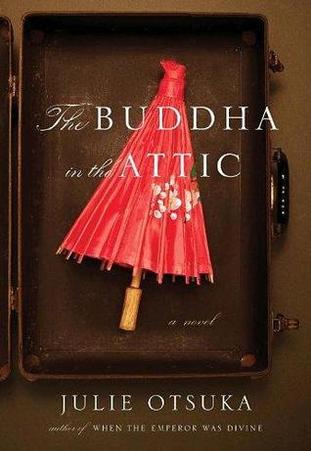Reviewed by B.D. Fischer

The reviewer’s greatest sin, frequently committed in the pages of our most famous magazines, is to reveal the story. Doing so destroys the surprise that is the central pleasure, and it is a crime which can rarely be forgiven. Fortunately, there is no such danger with Here/Other, the new novella from the poet Kat Dixon, for there is no plot as that word is traditionally understood, and if there were I wouldn’t know what it was, and if I did revealing it would be peripheral, perhaps vestigial.
The story, such as it is, revolves without resolving around a matrix of relationships, between Pigeon and Wednesday, Pigeon and Zanzibar, Wednesday and Zanzibar (a different type of relationship), Pigeon and the Chair (“of a goddamned Department” [108]), and the Chair and the woman at the post office with the deformed hand, although some of these may be the same people. It lingers in their dailiness and freights the banal with thunderous meaning:
The story, such as it is, revolves without resolving around a matrix of relationships, between Pigeon and Wednesday, Pigeon and Zanzibar, Wednesday and Zanzibar (a different type of relationship), Pigeon and the Chair (“of a goddamned Department” [108]), and the Chair and the woman at the post office with the deformed hand, although some of these may be the same people. It lingers in their dailiness and freights the banal with thunderous meaning:
The elevator wasn’t coming. It had stopped once, hadn’t it? It had stopped. Something was wrong. The elevator wouldn’t come. He pulled a strip of skin from the curve of his lower lip. He thought, Where—where—where, and the words might come up and over him. … [N]o, the elevator was coming. He could hear the rattle of its measured descent. It is coming, he thought. He would wait (25).
The elevator is one the controlling leitmotifs that give Here/Other its spiderweb structure, and it functions in symbolic contrast to another, that of the stairs:
In each geography, I’ve opened you. The elevator came with some new screaming. The stairs the stairs the stairs the stairs the stairs. Starlight in some deeper blue. I’ve loved you more than you’ve loved anyone, which is to say not at all. Wednesday kept her lovers counted like pearls. Zanzibar should have taken the stairs, but Pigeon had taken the stairs—and he wouldn’t interrupt. He stopped his mouth with usual wine. He stopped his mouth with some new Person (169).
 Kat Dixon, Author of Here/Other
Kat Dixon, Author of Here/Other Dixon works in the wake of Language Poetry, with sound, word selection, and the internal relationships of the parts trumping the whole. Every bit of language is a brief on behalf of the way the world is, but Here/Other’s is unusually compelling on behalf of fragmentalism. Indeed, Here/Other is billed as a novella but could readily have been classified a prose poem or series of prose poems. In this it reminds of Lyn Hejinian’s My Life, the autobiography of one of Language Poetry’s central figures, in which obsessive rumination and repetition take the casually associative logic of modernism to its extreme. “What is the meaning hung from that depend?” Hejinian asks again and again. Done poorly, to read this is to be embarrassed, for the specter of surrealism and violation of Kundera’s dictum against chaos as method (rather than subject) looms above all. But Dixon is skillful, and her empathy for character, reader, and writer mark each page.
Instead of Hejinian’s needling question, Dixon deploys a polysemous flittering letter/letter—letters from and to Pigeon and Wednesday, the letters of the words on the page we are reading—that links character, author, and theme across nearly 200 pages. The project of Language Poetry was, in many incarnations, explicitly political and aligned with Deconstruction. (I am tempted to think that she has Deconstruction in specific mind when Pigeon says that Zanzibar’s destroyed sculptures “would certainly require reconstructing if she were ever to know that she’d gotten them all” [92].) It’s funny how memory changes, but Deconstruction almost seems conservative to today’s leftists. The Chair, a frequent object of scorn, says, “Let’s not become too unconventional all at once …. that would be very dangerous,” and “chuckles” (56). It’s clear that Dixon does not accept this rebuke, and her performance of this rejection is its own justification.
Exactly what the interplay of elevators and stairs come to is not clear in any intellectual sense that I can fashion, but this is a feature not a bug. The imagery and presentation shed the skin of the proposition in favor of a purer rhetoric, their own logic. To create this is a mighty ambition, a mightier achievement. Always real artists must come to blows with the deus ex nihilo. Dixon forgoes, and is even dismissive, of these specifics, for her project is at once larger and smaller, more emotional, and more compelling. In this context, Dixon’s ascent to levels above both language and narrative creates one of Here/Other’s central unities, the endless discourse on the relationship and distinctions between creation, writing, and reality. At times she goes full-on meta:
Instead of Hejinian’s needling question, Dixon deploys a polysemous flittering letter/letter—letters from and to Pigeon and Wednesday, the letters of the words on the page we are reading—that links character, author, and theme across nearly 200 pages. The project of Language Poetry was, in many incarnations, explicitly political and aligned with Deconstruction. (I am tempted to think that she has Deconstruction in specific mind when Pigeon says that Zanzibar’s destroyed sculptures “would certainly require reconstructing if she were ever to know that she’d gotten them all” [92].) It’s funny how memory changes, but Deconstruction almost seems conservative to today’s leftists. The Chair, a frequent object of scorn, says, “Let’s not become too unconventional all at once …. that would be very dangerous,” and “chuckles” (56). It’s clear that Dixon does not accept this rebuke, and her performance of this rejection is its own justification.
Exactly what the interplay of elevators and stairs come to is not clear in any intellectual sense that I can fashion, but this is a feature not a bug. The imagery and presentation shed the skin of the proposition in favor of a purer rhetoric, their own logic. To create this is a mighty ambition, a mightier achievement. Always real artists must come to blows with the deus ex nihilo. Dixon forgoes, and is even dismissive, of these specifics, for her project is at once larger and smaller, more emotional, and more compelling. In this context, Dixon’s ascent to levels above both language and narrative creates one of Here/Other’s central unities, the endless discourse on the relationship and distinctions between creation, writing, and reality. At times she goes full-on meta:
None of this happened. There was no flood. There were no people trapped in an elevator. They were people I made up (90).
Fuck all stories. There is no story. Just these People, barely anything. Barely anything more than faces. Disconnected, discontinued. Busts—bare down to the shoulders and eyeless in some places. There had been too much attention to detail, that was it (104).
Oh, Pigeon, can you feel the seizures in my middling? Hello will do nicely. Time now to reveal all those emptied: I’ve been coughing up whole pills in the nighttime. A page is never wide enough for me and my sentences (128).
How you are alone in this room. How we become alone in this room. A stanza opens onto itself and sees failure, bones marred by cigarettes and slow drippings, the ruptured dotting of state lines. … How our words, even counted, bear repetition (170).
Dixon is expert at walking up to dangerous lines—of surrealism, of over-aestheticism, of totalitarian conclusion—and dancing away at the final moment in commingled grief or pleasure. These tightropes contribute to Here/Other’s tone of constant elegy, the grasping for lost pasts, redemptive futures, and the perfect sentence. It’s not a bad lament to voice, or to feel.

B.D. Fischer grew up in a major metropolitan suburb that a prominent financial lifestyle magazine called the best place to live in the entire universe. At 17 he dropped out of high school and moved to upstate New York, where he poured beer, repossessed cars, and published his first story. He spent the first decade of the new century across the American South, mostly in Austin, Texas, where he graded standardized tests, taught interior design, and ran an elevator in an ADA-compliant museum. He moved to Wuhu, Anhui, China, in 2011, where he met his future wife, before settling in Uptown, Chicago. His novel, Slowly But Thoroughly, is forthcoming from Strange Days Books. You can find him on Twitter: @3StrangeThings or on the web: www.threestrangethings.com.


 RSS Feed
RSS Feed

